Monthly Archives: October 2020
 Most airplanes in the 1940s were of a similar design…the kind that were a simple wing design. There was, however, a futuristic flying machine that made it’s debut on October 21, 1947. The Northrup YB-49 Flying Wing was a prototype jet-powered heavy bomber developed by Northrop Corporation shortly after World War II for service with the United States Air Force. The YB-49 featured a futuristic flying wing design and was a turbojet-powered version of the earlier, piston-engined Northrop XB-35 and YB-35. The test flight of the Northrop YB-49 took place at Northrop Field, Hawthorne, California. It was piloted by Chief Test Pilot Max R Stanley. That first flight seemed to be going well, but it faced stability problems during simulated bomb runs and political problems doomed the flying wing.
Most airplanes in the 1940s were of a similar design…the kind that were a simple wing design. There was, however, a futuristic flying machine that made it’s debut on October 21, 1947. The Northrup YB-49 Flying Wing was a prototype jet-powered heavy bomber developed by Northrop Corporation shortly after World War II for service with the United States Air Force. The YB-49 featured a futuristic flying wing design and was a turbojet-powered version of the earlier, piston-engined Northrop XB-35 and YB-35. The test flight of the Northrop YB-49 took place at Northrop Field, Hawthorne, California. It was piloted by Chief Test Pilot Max R Stanley. That first flight seemed to be going well, but it faced stability problems during simulated bomb runs and political problems doomed the flying wing.
The unusual configuration, for an aircraft of that time, had no fuselage or tail control surfaces. The crew compartment, engines, fuel, landing gear, and armament were contained within the wing. Air intakes for the turbojet engines were placed in the leading edge and the exhaust nozzles were at the trailing edge. Four small vertical fins for improved yaw stability were also at the trailing edge. While the design might have had many stabilizing characteristics, it was still basically a set of wings, connected together, with a small crew  compartment in the middle. I suppose it looked like an early version of the F-117 Nighthawk stealth airplane, but with much bigger wings and a much smaller crew cabin.
compartment in the middle. I suppose it looked like an early version of the F-117 Nighthawk stealth airplane, but with much bigger wings and a much smaller crew cabin.
The YB-49 was powered by eight General Electric, Allison Engine Company, J35-A-5 engines. A variant of that engine was used in the North American Aviation XP-86, replacing its original Chevrolet-built J35-C-3. The engines were later upgraded to J35-A-15s. The J35 was a single-spool, axial-flow turbojet engine with an 11-stage compressor and single-stage turbine. It shocks me that there was such a thing as a turbojet engine back then, but apparently there was. During the testing of the YB-49, it reached a maximum speed of 428 knots (493 miles per hour) at 20,800 feet. It had a cruising speed of 365 knots (429 miles per hour). The airplane had a service ceiling of 49,700 feet. The YB-49 had a maximum fuel capacity of 14,542 gallons of JP-1 jet fuel. Its combat radius was 1,403 nautical miles. The maximum bomb load of the YB-49 was 16,000 pounds, though the actual number of bombs was limited by the volume of the bomb bay and the capacity of each bomb type. While the YB-35 Flying Wing was planned for multiple machine gun turrets, but none were attached.
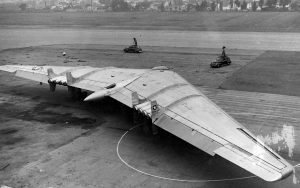 In the second test flight, the unstable YB-49 crashed on Jan. 13, 1948. After the crash, the testing continued with both aircraft until the second YB-49 crashed on June 5, 1948. They tried to make the plane work, but it just didn’t seem to be in the cards. The crew of the crashed YB-49 included Major Daniel H Forbes Jr, pilot; Captain Glen W Edwards, copilot; Lieutenant Edward L Swindell, flight engineer; Clare E Lesser and C C La Fountain. Later, The two pilots were honored with the naming of two Air Force installations. Edwards Air Force Base, California, was named in honor of Captain Edwards, and Forbes Air Force Base, Kansas, was named in honor of Major Forbes.
In the second test flight, the unstable YB-49 crashed on Jan. 13, 1948. After the crash, the testing continued with both aircraft until the second YB-49 crashed on June 5, 1948. They tried to make the plane work, but it just didn’t seem to be in the cards. The crew of the crashed YB-49 included Major Daniel H Forbes Jr, pilot; Captain Glen W Edwards, copilot; Lieutenant Edward L Swindell, flight engineer; Clare E Lesser and C C La Fountain. Later, The two pilots were honored with the naming of two Air Force installations. Edwards Air Force Base, California, was named in honor of Captain Edwards, and Forbes Air Force Base, Kansas, was named in honor of Major Forbes.
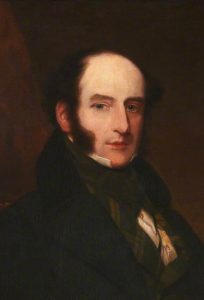 These days, a surgery is performed in comfort, as the patient is under anesthesia, and therefore, feels none of the surgical procedure, at least that is true for most people. There are an unfortunate few for whom anesthesia has little effect. Dr Robert Liston was a pioneering Scottish surgeon, well known for his skills in an era prior to anesthetics, when speed made a difference in terms of pain and survival. For most of us, the idea of a surgery performed in a matter of seconds would not instill much confidence in the doctor…or the procedure, but there was a time when all surgical procedures were performed in this way. People couldn’t take it very long, and the only thing they might have to dull the pain was alcohol…just like we have all seen in the old western movies.
These days, a surgery is performed in comfort, as the patient is under anesthesia, and therefore, feels none of the surgical procedure, at least that is true for most people. There are an unfortunate few for whom anesthesia has little effect. Dr Robert Liston was a pioneering Scottish surgeon, well known for his skills in an era prior to anesthetics, when speed made a difference in terms of pain and survival. For most of us, the idea of a surgery performed in a matter of seconds would not instill much confidence in the doctor…or the procedure, but there was a time when all surgical procedures were performed in this way. People couldn’t take it very long, and the only thing they might have to dull the pain was alcohol…just like we have all seen in the old western movies.
Dr Robert Liston was an expert. He could perform an amputation in seconds. All was going well, and he was a trusted surgeon until 1847, when he was performing an amputation, which he completed in 25 seconds. He was operating so quickly that he accidentally amputated his assistant’s fingers as well. I can only imagine the shock. His was a career filled with skill and excellence, and in an instant, he had a major mistake on his hands.
Dr Liston was famous for his speedy surgeries…often lasting only around 30 seconds. He was well known and respected. In his book “Practical Surgeries,” published in 1837, he emphasizes the importance of quick surgeries, arguing that “these operations must be set about with determination and completed rapidly.” It was all he knew to do. At that time in history, it was the standard of care that everyone expected.
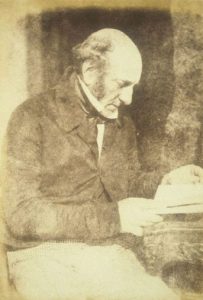
Not everyone believes that the mishap was a true story, and I suppose we will never know, but as the story goes, the case went from bad to worse, when both the patient and the assistant developed sepsis and died. In addition, a spectator reportedly died of shock, meaning that the mortality rate of that one surgery was 300%. While that one surgery was terrible, Dr Liston had many stories of amazing surgeries and miraculous successes. Nevertheless, this one surgery was his most famous. There is a saying by Michael Josephson that goes like this, “We judge ourselves by our best intentions and most noble deeds, but we will be judged by our worst act.” That worst act doesn’t necessarily have to be intentional, and in fact most “worst acts” aren’t intentional. Liston was a good surgeon, and even if he did have this mishap, his overall mortality rate was actually impressive compared to his peers…especially when you consider the speed factor. According to historian Richard Hollingham, “of the 66 patients Liston operated between 1835 and 1840, only 10 died – a death rate of only around 16%.”
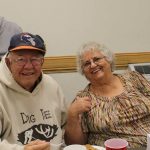 There are among us sometimes, people who are naturally humble. These aren’t beaten down people of no real worth, but rather people of great worth to those around them, but who somehow do their “good deeds” under the radar, and thereby go almost unnoticed. My Uncle Jim Richards is one of those people. His life in service to those around him really began at the very young age of just eight years. At that time, less than a year after losing his older brother Daile during the D-Day attack at Normandy, France, and with 12 remaining siblings, 4 of whom were younger than he was, Uncle Jim realized that his mother was going to need the help of her children to get through all this. Not many 8 year old boys would be able to grasp all that, but Uncle Jim wasn’t a typical 8 year old boy. He was the kind of boy, who saw a need, and went out of his way to meet that need. I suppose there might have been 8 year old boys who would want everyone to know what they had done for their family, but Uncle Jim wasn’t one of those 8 year old boys. He simply saw a need, and went forward to meet the need. That was his nature.
There are among us sometimes, people who are naturally humble. These aren’t beaten down people of no real worth, but rather people of great worth to those around them, but who somehow do their “good deeds” under the radar, and thereby go almost unnoticed. My Uncle Jim Richards is one of those people. His life in service to those around him really began at the very young age of just eight years. At that time, less than a year after losing his older brother Daile during the D-Day attack at Normandy, France, and with 12 remaining siblings, 4 of whom were younger than he was, Uncle Jim realized that his mother was going to need the help of her children to get through all this. Not many 8 year old boys would be able to grasp all that, but Uncle Jim wasn’t a typical 8 year old boy. He was the kind of boy, who saw a need, and went out of his way to meet that need. I suppose there might have been 8 year old boys who would want everyone to know what they had done for their family, but Uncle Jim wasn’t one of those 8 year old boys. He simply saw a need, and went forward to meet the need. That was his nature.
Uncle Jim was a hard worker, who was good at his job, but his first loyalty was always to his family. From boyhood, when he did what things he could to help the family financially, to the later years when a number of his siblings as well as him mom lived with him and his family when they needed to. He also helped out with my grandparents, who were his wife, my Aunt Dixie’s parents, as they got older and needed assistance. And then 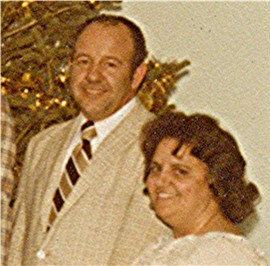 he became the chauffer for his grandchildren when his kids had worked and their kids needed a babysitter and a ride home from school. Of course, he couldn’t always do that, but when he retired, he took great pleasure in the time he spent being the “bus driver” for his grandchildren.
he became the chauffer for his grandchildren when his kids had worked and their kids needed a babysitter and a ride home from school. Of course, he couldn’t always do that, but when he retired, he took great pleasure in the time he spent being the “bus driver” for his grandchildren.
Uncle Jim has always had a quiet demeanor. He isn’t a really chatty person, but when he says something, it is always full of love and kindness. People think of him as a teddy bear type, because of his personality. I have to agree with them, because that is always the way I thought of him…not the teddy bear part, exactly, but when I heard that, I had to agree. Today is Uncle Jim’s 83rd birthday. Happy birthday Uncle Jim!! Have a great day!! We love you!!
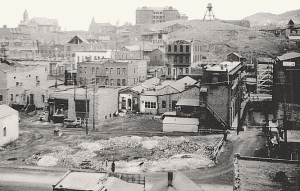 For many years my husband’s Aunt Marian and Uncle John Kanta lived in Helena, Montana. Some of their kids still do, but they didn’t live there in 1935, when on October 18th, a magnitude 6.2 earthquake struck at 10:48pm. The quake had its epicenter right near Helena and it had a maximum perceived intensity of VIII (Severe) on the Mercalli intensity scale. The quake on that date was the largest of a series of earthquakes that also included a large aftershock on October 31 of magnitude 6.0 and a maximum intensity of VIII. Two people died in the first quake, and two others died as a result of the October 31 aftershock. Property damage was over $4 million.
For many years my husband’s Aunt Marian and Uncle John Kanta lived in Helena, Montana. Some of their kids still do, but they didn’t live there in 1935, when on October 18th, a magnitude 6.2 earthquake struck at 10:48pm. The quake had its epicenter right near Helena and it had a maximum perceived intensity of VIII (Severe) on the Mercalli intensity scale. The quake on that date was the largest of a series of earthquakes that also included a large aftershock on October 31 of magnitude 6.0 and a maximum intensity of VIII. Two people died in the first quake, and two others died as a result of the October 31 aftershock. Property damage was over $4 million.
Helena is a pretty city that lies in a valley in western Montana. It lies within the northern part of the Intermountain Seismic Belt (ISB). I didn’t know it then, but this is an area of relatively intense seismicity. It runs from northwestern Arizona, through Utah, Idaho, and Wyoming, before dying out in northwestern Montana. In the area near Helena, it turns to the northwest, where it intersects with the Lewis and Clark fault zone. The Helena earthquake sequence actually began October 3, 1935, with a small earthquake. That quake was followed by a damaging earthquake on October 12th, a magnitude 5.9, intensity VII. That wasn’t the mainshock, however. That one occurred on October 18th, a magnitude 6.2, intensity VIII. A lesser shock followed on October 31st, a magnitude 6.0, intensity VIII, and a further large aftershock on November 28th, a magnitude 5.5, intensity VI. These were just the mainshocks. There were also a total of 1800 tremors recorded 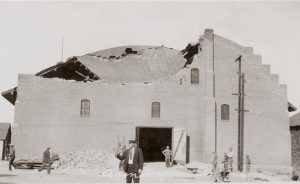 between October 4, 1935 and April 30, 1936. The people of Helena either got used to the shaking, which I can’t imagine, or they were terrified with every tremor, which makes more sense to me.
between October 4, 1935 and April 30, 1936. The people of Helena either got used to the shaking, which I can’t imagine, or they were terrified with every tremor, which makes more sense to me.
The damage to the unreinforced buildings of that era was widespread, with more than 200 chimneys destroyed in the city of Helena. At that time, little was known about reinforcement of buildings in earthquake prone areas. The northeast part of the city, where buildings were constructed on alluvial soil, and in the southern business district, which contained many brick buildings, saw the strongest effects. Alluvial soil is highly porous, which would explain the soil liquification that took place. The most extensively damaged building was the Helena High School, which was completed in August 1935 and had just been dedicated in early October. The school buildings, which had cost $500,000, had not been designed to be earthquake resistant. Another building that was totally destroyed and had to be rebuilt was the Lewis and Clark County Hospital. The October 18 earthquake caused an estimated $3 million of damage to property. The aftershock of October 31 caused further damage estimated at $1 million, particularly to structures already weakened by the October 18 shock. Two people were killed by falling bricks in Helena during the October 18 shock. Two brick masons died as while removing a brick tower during the October 31 aftershock.
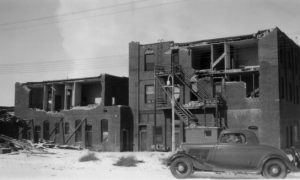 The Red Cross and Federal Emergency Relief Administration set up emergency camps for those displaced by the quake on land at the Montana Army National Guard’s Camp Cooney. Approximately 400 people stayed there the first night, but most had found space with friends or family outside of the damaged area by the end of the week. Some people were too afraid of continued shocks to stay in a house, and they stayed in tents for the next few weeks. The National Guard was deployed in Helena to keep sightseers away from the damaged buildings, and either because of the guard or the good moral values of the people, there was no looting. It is believed that in today’s world, the damages would have been in the $500 million range.
The Red Cross and Federal Emergency Relief Administration set up emergency camps for those displaced by the quake on land at the Montana Army National Guard’s Camp Cooney. Approximately 400 people stayed there the first night, but most had found space with friends or family outside of the damaged area by the end of the week. Some people were too afraid of continued shocks to stay in a house, and they stayed in tents for the next few weeks. The National Guard was deployed in Helena to keep sightseers away from the damaged buildings, and either because of the guard or the good moral values of the people, there was no looting. It is believed that in today’s world, the damages would have been in the $500 million range.
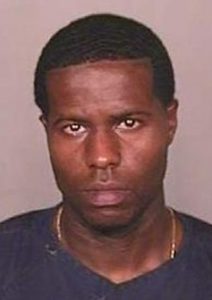 Prisoners have tried to escape ever since there have been prisons. It is the nature of the situation. No one likes to be locked up. Most escape attempts are not successful, and few are what we would consider well planned, but in the case of Florida prison inmates, Charles Walker and Joseph Jenkins, some kind of good planning must have gone into the escape plan. The two men were serving life sentences, without the possibility of parole, for murder, and so I guess they had nothing to lose by getting caught in an escape attempt. Jenkins was incarcerated for a 1998 murder and armed robbery and a 1997 auto theft. He has been in prison since 2000. Walker was imprisoned for a 1999 murder and has been in custody since 2001.
Prisoners have tried to escape ever since there have been prisons. It is the nature of the situation. No one likes to be locked up. Most escape attempts are not successful, and few are what we would consider well planned, but in the case of Florida prison inmates, Charles Walker and Joseph Jenkins, some kind of good planning must have gone into the escape plan. The two men were serving life sentences, without the possibility of parole, for murder, and so I guess they had nothing to lose by getting caught in an escape attempt. Jenkins was incarcerated for a 1998 murder and armed robbery and a 1997 auto theft. He has been in prison since 2000. Walker was imprisoned for a 1999 murder and has been in custody since 2001.
The men were serving their time in a Panhandle prison called Franklin Correctional Institution in Carrabelle, Florida. accidentally released two inmates from a Panhandle prison who are convicted murderers, according to published reports. Somehow, Walker and Jenkins, both 34, were able to obtain fraudulent orders of sentence modification. Based on those modifications, Jenkins was released on September 27, 2013, and Walker was released on October 8, 2013. Both were former residents of Orlando. Their release was apparently “in accordance with Department of Corrections policy and procedure. However, both of their releases were based on fraudulent modifications that had been made to court orders,” Department of Corrections secretary Michael Crews said.
The judge whose name is on the forged documents is Belvin Perry, Orange County chief judge, who presided 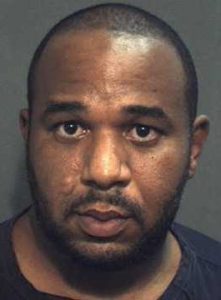 over the Casey Anthony case. Perry’s office said that the judge’s signature was forged in the paperwork calling for reduced sentences for the convicted killers. Apparently, however, while the false documents had problems the one thing that was correct was the judges signature. The judge denies any wrongdoing, saying “It is quite evident that someone forged a court document, filed a motion, and that someone with the aid of a computer, lifted my signature off previous signed documents, which are public reports, affixed that to the document, sent it to the clerk’s office. It was processed and forwarded to doc and the defendant ended up being released,” Perry maintains. He also says, “I have never seen anything like this. You have to give them an A for being imaginative and effective.” The reality is that this was not the first time a prisoner managed to obtain false documents, and probably wont be the last, since no one was caught in this act. The prison waited 17 days before notifying the authorities of the escape. Cybercrime is the newest thing. Easy to perform, hard to catch.
over the Casey Anthony case. Perry’s office said that the judge’s signature was forged in the paperwork calling for reduced sentences for the convicted killers. Apparently, however, while the false documents had problems the one thing that was correct was the judges signature. The judge denies any wrongdoing, saying “It is quite evident that someone forged a court document, filed a motion, and that someone with the aid of a computer, lifted my signature off previous signed documents, which are public reports, affixed that to the document, sent it to the clerk’s office. It was processed and forwarded to doc and the defendant ended up being released,” Perry maintains. He also says, “I have never seen anything like this. You have to give them an A for being imaginative and effective.” The reality is that this was not the first time a prisoner managed to obtain false documents, and probably wont be the last, since no one was caught in this act. The prison waited 17 days before notifying the authorities of the escape. Cybercrime is the newest thing. Easy to perform, hard to catch.
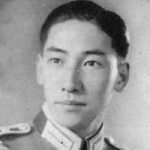 Yang Kyoungjong was a Korean man with an incredible story. In 1938, when he was 18 years old, Kyoungjong was in Manchuria when he was forced into the Kwantung Army of the Imperial Japanese Army to fight against the Soviet Union. It was the outbreak of World War II, and I suppose the Japanese decided they would be better off to make him soldier than to let him languish in a prisoner of war camp. So, fight he did. Korea was ruled by Japan at that time, and Kyoungjong really had no choice to to follow orders.
Yang Kyoungjong was a Korean man with an incredible story. In 1938, when he was 18 years old, Kyoungjong was in Manchuria when he was forced into the Kwantung Army of the Imperial Japanese Army to fight against the Soviet Union. It was the outbreak of World War II, and I suppose the Japanese decided they would be better off to make him soldier than to let him languish in a prisoner of war camp. So, fight he did. Korea was ruled by Japan at that time, and Kyoungjong really had no choice to to follow orders.
During the Battle of Khalkhin Gol, things weren’t going well for the Japanese army, and Kyoungjong was again captured…this time by the Soviet Red Army. He was sent to a Gulag labor camp. While he was there, and with Soviet manpower shortages being what they were, Kyoungjong was presses into service in the Soviet army in 1942. He, along with thousands of other prisoners, were told to fight with the Red Army against Nazi Germany. He was sent to the Eastern Front of Europe.
Somehow, Kyoungjong managed to always be in the wrong place at the wrong time. In 1943, he was once again captured, this time by the Wehrmacht soldiers in eastern Ukraine during the Third Battle of Kharkov. He 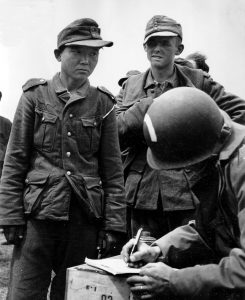 was pressed into service again, and told that he had joined the “Eastern Battalions” to fight for Germany. Kyoungjong was sent to Occupied France to serve in a battalion of former Soviet prisoners of war on the Cotentin peninsula in Normandy, close to Utah Beach. I’m sure he wondered which army he was really a part of.
was pressed into service again, and told that he had joined the “Eastern Battalions” to fight for Germany. Kyoungjong was sent to Occupied France to serve in a battalion of former Soviet prisoners of war on the Cotentin peninsula in Normandy, close to Utah Beach. I’m sure he wondered which army he was really a part of.
During the D-Day landings in northern France by the Allied forces, Kyoungjong was captured by paratroopers of the United States Army in June 1944. The American Army thought he was a Japanese soldier in German uniform at first. At the time, Lieutenant Robert Brewer of the 506th Parachute Infantry Regiment, 101st Airborne Division, reported that his regiment had “captured four Asians in German uniform after the Utah Beach landings, and that initially no one was able to communicate with them.” The good news for Kyoungjong was that he was not going to again be expected to fight with a different army. He was first sent to a prison camp in Britain and later transferred to a camp in the United States.
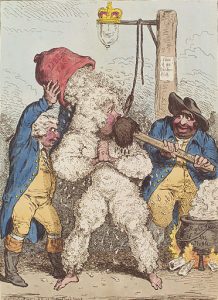 I think most of us have heard of being “tarred and feathered,” as a form of punishment, but we may not really know how much of a punishment it really was. When we think about it, the show, “Home Alone” might come to mind. Of course, some kind of syrup and then the feathers, but that does not really even begin to describe the real act of tarring and feathering.
I think most of us have heard of being “tarred and feathered,” as a form of punishment, but we may not really know how much of a punishment it really was. When we think about it, the show, “Home Alone” might come to mind. Of course, some kind of syrup and then the feathers, but that does not really even begin to describe the real act of tarring and feathering.
In 1776 in Norfolk, Virginia, Captain William Smith was tarred and feathered by a mob which actually included the mayor of Norfolk apparently!! Mobs are never a good thing. They are always out of control, and people who might normally be pretty decent, are dragged into things they might never do otherwise. Captain Smith was suspected of sharing secrets about a local ship owner John Gilcrest smuggling goods, with British officials. It was a terrible offence, but remember that he was “suspected” of this, not convicted. That is the problem with the mobs. They often take matters into their own hands…Vigilante Justice…whether the person is really guilty or not.
Tar and Feather was a medieval form of torture and humiliation. It involved stripping the victim up to his waist, applying tar on his body, and covering him with feathers. That wasn’t the end of it though. The victim was then put on a cart and paraded around the place. Sometimes, the tar was simply poured on the victim’s body and he was made to roll on feathers. This isn’t like syrup or the asphalt tar of today. The tar they used was likely from the pine tar the Colonies were accustomed to distilling for its use on preserving the wood of ships from rot. Hot asphalt tar would critically burn the body. Pine creates charcoal and pine tar when heated up. This pine tar is naturally a sticky substance making it a perfect material for applying to someone who is about to be covered in 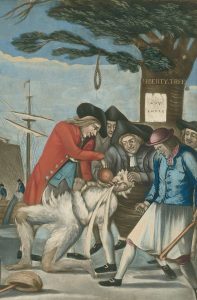 feathers. While that explains why there were no casualties of this form of punishment. Nevertheless, the job of removing the dried pine tar and feathers off the skin was extremely painful.
feathers. While that explains why there were no casualties of this form of punishment. Nevertheless, the job of removing the dried pine tar and feathers off the skin was extremely painful.
After Captain Smith was humiliated by the application of his feathery outfit, he was thrown into the harbor. He almost drowned before being rescued by a passing ship, just as his strength was giving out. He survived, and was later quoted as saying that “…[they] dawbed my body and face all over with tar and afterwards threw feathers on me.” As with most other tar and feathers victims in the decade that followed, Smith was suspected of informing on smugglers to the British Customs service. The punishment was harsh, and it was swift. The colonies were trying to gain their freedom, and that meant that they would fight to the death, and they would never tolerate traitors. I don’t know if Captain Smith was a traitor or not, but no one was ever punished for what they did to him, so there is that.
 Of course, they aren’t really angels, but rather they are God’s laborers on earth…the everyday people who find themselves at the right place, at the right time, to save the life of another person. What each contributed was different, but each contribution was vital to the saving of my husband, Bob Schulenberg’s life that October 14, 2018. God tells each of us things we need to know, and if we are listening, we can find ourselves suddenly in the middle of a life or death situation, in which we have the unique ability to do the right things to stave off death for another human being. It is a mind blowing revelation, but it is nevertheless, a reality.
Of course, they aren’t really angels, but rather they are God’s laborers on earth…the everyday people who find themselves at the right place, at the right time, to save the life of another person. What each contributed was different, but each contribution was vital to the saving of my husband, Bob Schulenberg’s life that October 14, 2018. God tells each of us things we need to know, and if we are listening, we can find ourselves suddenly in the middle of a life or death situation, in which we have the unique ability to do the right things to stave off death for another human being. It is a mind blowing revelation, but it is nevertheless, a reality.
That was the position Bob’s Heaven sent Earthly Angels found themselves in. In an instant, my husband went from loading the groceries in the car and returning the cart to the cart stand, to lying on the ground in the Walmart parking lot, blood running from his head, his skin turning purple, and his eyes open, but not seeing. For all intents and purposes, Bob was dead. But God had a different plan. God’s servant, Sean Pesicka-Taggart saw my husband fall, and immediately rushed to his side, trying to wake him. I was in the car, and heard him speaking, but it didn’t occur to me that he was talking to my husband. A pickup pulled up behind us. In the pickup was Ginger Sims, a nurse working at Wyoming Medical Center at the time. She thought Bob had been hit by a car. She pulled around to park her car and assist, telling her son to press the OnStar and get an ambulance coming. Finally, with things in place to save Bob’s life, a man knocked on my window to ask if I knew “this man.” It finally dawned on me that it was Bob. I believe God intentionally stalled my awareness so I would not be alone with the situation. As I jumped out of  the car and saw my husband, I immediately thought I was going to lose him, but then I stubbornly said, “No!!” Then I got down beside him telling him to wake up…”Come on Bob!!” Ginger heard me talking to him and asked if I knew him. Upon finding out he was my husband, she instructed me in rescue breathing. By now she was getting tired, and suddenly, Laura Lance, Sean’s girlfriend, and a transport worker at Wyoming Medical Center said that she knew CPR and so she spelled Ginger. Then, Valya Boycheva, another nurse at Wyoming Medical Center was leaving Walmart, and saw what was happening. She turned around, came back, and also assisted in CPR. Before I knew it, the ambulance summoned by both Ginger’s son and Sean, was there. I remember thinking how amazing it was that all this was taken care of with almost no effort on my part. And the reality is that it was only about five to seven minutes. How could so much activity have been crammed into that tiny sliver of time? Little did I know that there was more. As they were leaving Walmart, Chelsea and Zack Kessler saw what was happening, and began to pray. Chelsea called her dad, Scott Le Page and his wife, Donna, who also prayed. Lori DeSanti was leaving Walmart too, and she began to pray. These people were an extra amazement, because I knew them all, and yet they had no idea who they were praying for, and I had no idea they were praying. God just sent them there to pray, and they obeyed the call. The fire trucks also came to Bob’s assistance, and we knew one of the firefighters, Jerod Levin, because Bob had worked on the fire trucks when he worked for the City of Casper. Jerod took care of me…which I needed very much. He got me into the ambulance, so I could go with Bob, and then he took the time to bring my car to the hospital for me so I would
the car and saw my husband, I immediately thought I was going to lose him, but then I stubbornly said, “No!!” Then I got down beside him telling him to wake up…”Come on Bob!!” Ginger heard me talking to him and asked if I knew him. Upon finding out he was my husband, she instructed me in rescue breathing. By now she was getting tired, and suddenly, Laura Lance, Sean’s girlfriend, and a transport worker at Wyoming Medical Center said that she knew CPR and so she spelled Ginger. Then, Valya Boycheva, another nurse at Wyoming Medical Center was leaving Walmart, and saw what was happening. She turned around, came back, and also assisted in CPR. Before I knew it, the ambulance summoned by both Ginger’s son and Sean, was there. I remember thinking how amazing it was that all this was taken care of with almost no effort on my part. And the reality is that it was only about five to seven minutes. How could so much activity have been crammed into that tiny sliver of time? Little did I know that there was more. As they were leaving Walmart, Chelsea and Zack Kessler saw what was happening, and began to pray. Chelsea called her dad, Scott Le Page and his wife, Donna, who also prayed. Lori DeSanti was leaving Walmart too, and she began to pray. These people were an extra amazement, because I knew them all, and yet they had no idea who they were praying for, and I had no idea they were praying. God just sent them there to pray, and they obeyed the call. The fire trucks also came to Bob’s assistance, and we knew one of the firefighters, Jerod Levin, because Bob had worked on the fire trucks when he worked for the City of Casper. Jerod took care of me…which I needed very much. He got me into the ambulance, so I could go with Bob, and then he took the time to bring my car to the hospital for me so I would  have a way home later.
have a way home later.
God’s Earthly Angels. No, they were just people, but God gave them the opportunity to act at a time when their own special skills were desperately needed to save the life of a man most of them didn’t even know. When we think of angels, we think of beings who go to battle for us, when we need them most. That is exactly what these people did, so I guess angels is an appropriate word for them. All is know is that I…we, Bob and I, as well as our families, are forever indebted to these wonderful people who went to battle that day in the Eastside Walmart parking lot in Casper, Wyoming to fight for the life of my precious husband, Bob…and praise God…they won!!
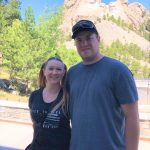 My nephew, Ryan Hadlock is a Compression Operator at Fleur de Lis (FDL), which used to be Anadarko, where his Uncle Mike Stevens also works. They have enjoyed working together, even though they are in different areas of the company. Ryan works on the natural gas side, and I believe Mike is on the oil side. Ryan’s job is to maintain the compressors, making sure they work right, Fixing them when they don’t, taking readings, etc. Ryan enjoys his job, and even picks up extra shifts once in a while. His job has been good to him, and has afforded them the money they need to live the life they want to.
My nephew, Ryan Hadlock is a Compression Operator at Fleur de Lis (FDL), which used to be Anadarko, where his Uncle Mike Stevens also works. They have enjoyed working together, even though they are in different areas of the company. Ryan works on the natural gas side, and I believe Mike is on the oil side. Ryan’s job is to maintain the compressors, making sure they work right, Fixing them when they don’t, taking readings, etc. Ryan enjoys his job, and even picks up extra shifts once in a while. His job has been good to him, and has afforded them the money they need to live the life they want to.
Ryan has always been an outdoorsman. He and his dad, Chris have gone fishing, and camping, and they both love sports of all kinds too. Ryan and his wife, Chelsea 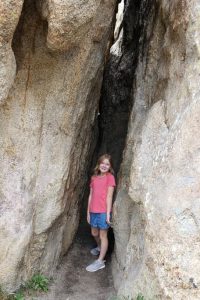 decided to buy a new fifth-wheel trailer this year, and since then, they have gone camping crazy. Most weekends find them and their kids, Ethan and Aurora on the road headed somewhere to go camping. They have taken several great trips this past summer, and my husband, Bob and I got to meet up with them in the Black Hills for the Custer Fireworks Display. We joined them and Ryan’s sister, Jessi her husband, Jason, and their daughter, Adelaide too. Ryan, Chelsea, and the kids also made trips around Wyoming and into Colorado. They all had a wonderful time, and we felt honored to get to join them for part of it.
decided to buy a new fifth-wheel trailer this year, and since then, they have gone camping crazy. Most weekends find them and their kids, Ethan and Aurora on the road headed somewhere to go camping. They have taken several great trips this past summer, and my husband, Bob and I got to meet up with them in the Black Hills for the Custer Fireworks Display. We joined them and Ryan’s sister, Jessi her husband, Jason, and their daughter, Adelaide too. Ryan, Chelsea, and the kids also made trips around Wyoming and into Colorado. They all had a wonderful time, and we felt honored to get to join them for part of it.
Ryan is a happy guy…mostly I’m sure, because her is happily married and has the family he always wanted. He keeps things lively with is jokes and teasing, and his kids are learning to joke and tease. Ryan and Chelsea find it hard to believe that Ethan is in 8th grade and Aurora is in 4th grade. Where have all the years gone. Time flies when you are having fun, and the Hadlock family is definitely having fun.
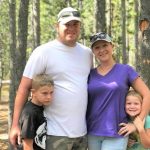
Ryan and Chelsea have been doing home Bible studies with their kids this summer, and the whole family is really growing spiritually. The study is designed to make a relationship with God, a personal thing for each of them, and it has been very successful. The kids have been telling my sister, Allyn Hadlock, who is their grandma, just how much they have learned. This has been an especially enlightening study for Ethan and Aurora, who have been telling their grandma all about how good God is. It is always an important thing for the husband in a family to take the spiritual lead, and Ryan has done that very well. We are very proud of him in this endeavor. Today is Ryan’s birthday. Happy birthday Ryan!! Have a great day!! We love you!!
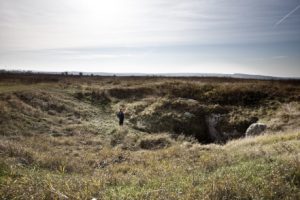 During World War II, and Jews who didn’t want to entrust their survival to the Nazis, had to make a way of escape or find a place to hide. For those who hoped against hope that the Nazis didn’t really hate them, or that the war would end very soon, the chance to escape came and went before they had really given the situation much thought. This was especially true for the Jewish people who had been born in the countries they now found themselves outcasts of.
During World War II, and Jews who didn’t want to entrust their survival to the Nazis, had to make a way of escape or find a place to hide. For those who hoped against hope that the Nazis didn’t really hate them, or that the war would end very soon, the chance to escape came and went before they had really given the situation much thought. This was especially true for the Jewish people who had been born in the countries they now found themselves outcasts of.
Zaida Stermer, his wife Esther, and their six children, of Korolowka, Ukraine, dug up the last of their possessions from behind their house, loaded their wagons with food and fuel, and drove away into the darkness. It was October 12, 1942. The Stermers weren’t alone. Traveling with them were about two dozen friends and family members, all Jews…and all in a lot of trouble. They had almost waited too long, and now the Nazis were out to kill all the Jews in the village. Ukraine had been under German occupation for about a year by then, and they had hoped that the war would end, and they could get back to their lives, but instead, the situation was exploding, and they had to get out while they still could.
The group made their way quietly about 5 miles to the north of town. With the Nazi “roundups and mass executions” of Ukrainian Jews in full swing, they were headed to a dirt road that ended at a sinkhole. There they made their way into a summertime tourist attraction known as the Verteba cave. They knew this was only 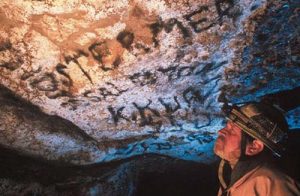 going to be a temporary solution, because in the summer, the tourists would be back, and they would be discovered. They hoped they had until summer.
going to be a temporary solution, because in the summer, the tourists would be back, and they would be discovered. They hoped they had until summer.
Modern cave explorers would not consider going underground without reliable light sources, technical and safety gear, navigation experience, clothing to stave off hypothermia, and of course an adequate supply of food and fresh water. The Stermers and their little band of survivors had none of these things. They went in in the dark, and had no light in the morning either. They fumbled their way further and further into the cave, hoping they could find there way back out. The cave had little ventilation and no real water supply, except what seeped through the rocks. Cooking was dangerous, and they almost lost a child to smoke inhalation. They moved the cooking further into the cave where they found better ventilation. Then came the worst night of all…
They had been in Verteba about four weeks, and thinking they might make it when their optimism was shattered. Suddenly in the dark they heard the sound of boots, and the rattling of guns. Someone yelled in Yiddish, “The Germans are here!! They’ve discovered us!!” Just as suddenly, and before anyone could think twice, Ester spoke up, “Very well, so you have found us. What do you think? Do you think that unless you kill us the Fuhrer will lose the war? Look at how we live her, like rats. All we want is to live, to survive the war years. Leave us here.” She was stalling!! She was allowing the others time to escape. As the stunned Germans listened to this little lady, the others hurried to the escape route they had found earlier. In the end, the 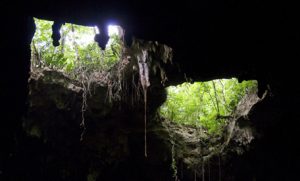 Germans only got eight of the cave dwelling Jews. Miraculously, Esther escaped. They hid out with friends throughout April 1943, but things were heating up again, and Esther told her family, “We are not going to the slaughterhouse.” She said to her son, Nissel, “Go to the forest, find a hole, anything.” It was thanks to Nissel that the family survived. Nissel located the cave known as the Priest’s Grotto. It was thought that the world record for living underground was 205 days, but the true record was set by the women and children who survived the Priest’s Grotto, by living completely underground for 344 days without seeing the outside world. It was a tough way to live, but they did survive, and that is a miracle.
Germans only got eight of the cave dwelling Jews. Miraculously, Esther escaped. They hid out with friends throughout April 1943, but things were heating up again, and Esther told her family, “We are not going to the slaughterhouse.” She said to her son, Nissel, “Go to the forest, find a hole, anything.” It was thanks to Nissel that the family survived. Nissel located the cave known as the Priest’s Grotto. It was thought that the world record for living underground was 205 days, but the true record was set by the women and children who survived the Priest’s Grotto, by living completely underground for 344 days without seeing the outside world. It was a tough way to live, but they did survive, and that is a miracle.

